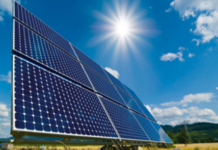
The Delhi Solar Policy is going to give households the much needed push to generate and use renewable energy, but the biggest gainers of the policy are going to be those who go for high capacity plants.
The power department has formulated five categories under which applications for installing solar systems would be accepted. The first two categories are 1-4 kW and 5-10 kW, which are small-capacity plants primarily aimed at flats and houses.
The third one, installations above 10 kW, is primarily for schools, companies, hospitals and office buildings.
The policy has been formulated under the Capex and Resco model. Under the Capex model, there will be no fixed tariff. The bill will depend on the energy generated by the user while in the Resco model, there will be a fixed tariff. Under the Resco model, there will be two types — One where for the first year, a consumer will have to pay less than Rs 3.33 per unit for the first year and in each subsequent year the tariff would increase by 5%. In the second type, a flat tariff of less than Rs 5.10 per unit will be charged and this rate would be constant for the 25 years.
“The big gainers of the policy would be those who get solar plants installed under the Resco model or above 10 KW category of the Capex model. This is because those who opt for these categories consume large quantity of electricity which costs them Rs 8 per unit. However, if they install a rooftop system power cost could come down by half,” said a power department official.
“With the 30% MNRE subsidy and generation based incentive (GBI) of Rs 2 per unit, a consumer would have to pay only Rs 4 per unit instead of Rs 8 which is the tariff for those who consume more than 800 units of power a month,” the official added.
The GBI given by Delhi government will be rolled out for a period of three years and is expected to cost the government around Rs 50 crore. For 2017-18, it has allocated Rs 20 crore for the same.
Citing a few examples of space needed and cost, the officials said, a 2 kW rooftop plant would need around 20 sq mt of shadow free area and would cost around Rs 80,000 after availing the 30% MNRE subsidy. Similarly, installing a 5-6 kW system would take 50 sq mtr area and would cost around Rs 2 lakh. For a 10 kW plant, 100 sq mtre would be needed at a cost of Rs 3 lakh.
Explaining the reason for restricting the incentives for three years, an official said, “A limited-time incentive will reduce payback time by one to two years and increase adoption. The current environment is not such that people are excited or interested to get solar panels installed.”
The policy also mandates that those who install small solar systems of up to 200 KW will be exempted from certification by an inspector and only self-certification will suffice. Households will also get tax exemptions and relaxations in building bylaws.
Source: http://www.hindustantimes.com


















